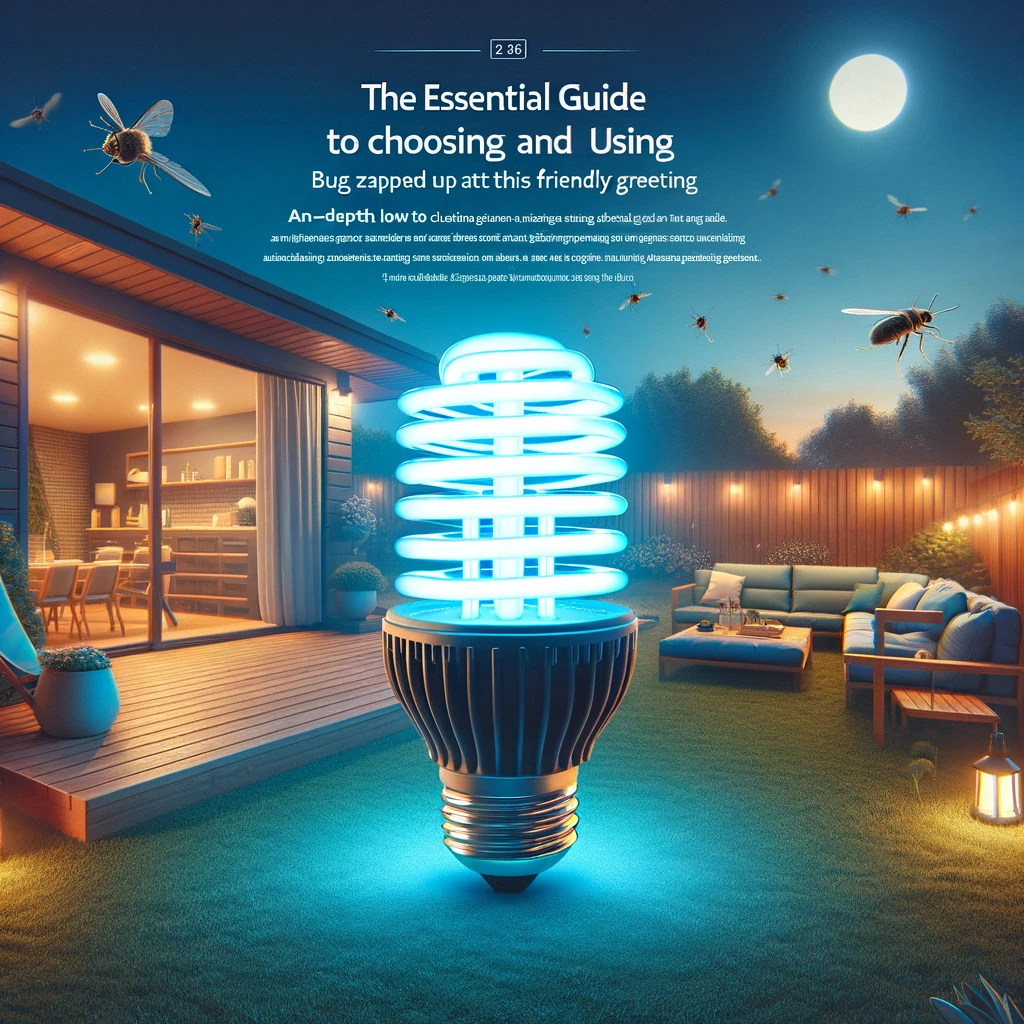A bug zapper bulb is a unique type of light bulb that combines illumination with an electric grid to attract and kill flying insects. Ideal for both indoor and outdoor use, these bulbs are designed to provide a convenient and effective way to control pests like mosquitoes, flies, and moths.
Why Choose a Bug Zapper Bulb?
Bug zapper bulbs are chosen for their dual functionality. They not only light up your space but also help in reducing the number of insects. They are especially useful during the warmer months when insects are more active. This can make evenings outdoors more pleasant and protect your home from insect-related diseases. You can also read What You Need to Know About the Nov 24th Horoscope
How Does a Bug Zapper Bulb Work?
The bug zapper bulb emits ultraviolet light, which is highly attractive to many types of insects. As insects approach the bulb, they encounter an electrically charged grid that surrounds the light. This grid delivers a swift, lethal shock to the pests, effectively eliminating them without the use of chemicals.
Key Features to Consider
1. Type of Light
Most bug zapper bulbs emit UV light since many pests find this type of light irresistible. Some models might offer different lighting modes, allowing them to be used as regular light bulbs when pest control isn’t needed.
2. Coverage Area
The effectiveness of a bug zapper bulb is often determined by the size of the area it covers. Bulbs vary in their coverage, with some capable of protecting a small room, while others can cover a large backyard. Knowing the area you need to cover will help you choose the right bulb.
3. Safety Features
Look for bulbs that are designed with safety in mind, especially if you have children or pets. Some bulbs come with a protective cage to prevent accidental contact with the electrified grid.
4. Energy Efficiency
While bug zapper bulbs are effective at killing insects, they should also be energy efficient. LED models are often the best choice as they consume less energy and have a longer lifespan compared to traditional bulbs.
5. Ease of Maintenance
Consider how easy the bulb is to clean and maintain. Models that are easy to disassemble will make it easier to remove insect debris and maintain efficiency.
Installation Tips
- Location: Install the bulb in an area where you notice a high activity of insects. Avoid placing it too close to human activity areas since the light could attract insects towards people.
- Height: Mounting the bulb at the right height is crucial. Typically, placing it around 6 to 8 feet above the ground will maximize its effectiveness.
- Protection from Elements: If you’re using the bulb outdoors, ensure it’s protected from water unless it’s specifically designed to be weather-resistant.
Common Questions About Bug Zapper Bulbs
How often should I replace my bug zapper bulb?
The lifespan of a bug zapper bulb varies depending on the model and usage. Typically, it’s a good idea to replace the bulb every season to ensure it remains effective.
Are bug zapper bulbs safe around pets and children?
While bug zapper bulbs are generally safe, it’s important to choose models with protective features like cages or grids that prevent direct contact with the electrified parts.
Can I use a bug zapper bulb indoors?
Yes, there are models designed for indoor use. However, it’s essential to ensure the room is well ventilated and the bulb is placed away from direct contact with people and pets.
Final Thoughts
Bug zapper bulbs are a practical and efficient solution for managing insect populations in and around your home. By understanding how they work and what features to look for, you can select a model that suits your needs and provides a bug-free environment. Remember to consider the safety, efficiency, and maintenance aspects to get the most out of your bug zapper bulb.
